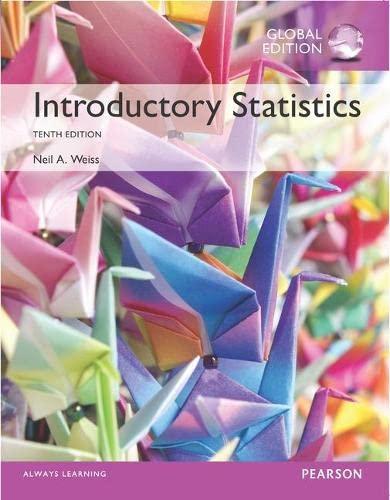Snow Goose Nests. In the article Trophic Interaction Cycles in Tundra Ecosystems and the Impact of Climate
Question:
Snow Goose Nests. In the article “Trophic Interaction Cycles in Tundra Ecosystems and the Impact of Climate Change” (BioScience, Vol. 55, No. 4, pp. 311–321), R. Ims and E. Fuglei provided an overview of animal species in the northern tundra. One threat to the snow goose in arctic Canada is the lemming. Snowy owls act as protection to the snow goose breeding grounds. For two years that are 3 years apart, the following graphs give relative frequency histograms of the distances, in meters, of snow goose nests to the nearest snowy owl nest.
0.0 0.1 0.2 0.3 0.4 0.0 0.1 0.2 0.3 0.4 0.5 0 400 800 1200 1600 2000 2400 2800 Distance from owl nest Year 2 Year 1 For each histogram, do the following:
a. Identify the shape of the distribution with regard to modality.
b. Identify the shape of the distribution with regard to symmetry (or nonsymmetry).
c. If the distribution is unimodal and nonsymmetric, classify it as either right skewed or left skewed.
d. Compare the two distributions.
Working with Large Data Sets In each of Exercises 2.152–2.157,
a. use the technology of your choice to identify the modality and symmetry (or nonsymmetry) of the distribution of the data set.
b. if unimodal, classify the distribution as symmetric, right skewed, or left skewed.
Note: Answers may vary depending on the type of graph that you obtain for the data and on the technology that you use.
Step by Step Answer:





